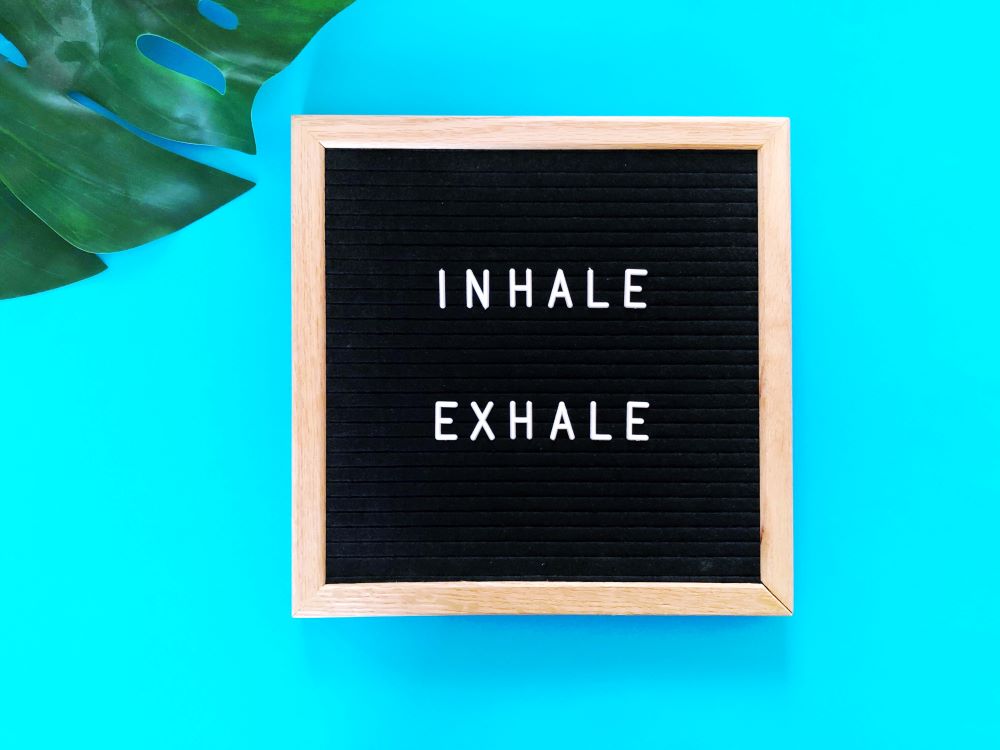Safe Touch Therapy in Darmstadt – Your Proven Path to Calm

You know that feeling when you’ve been clenching your jaw all day and suddenly realize it? And when you finally unclench it, there’s this wave of relief you didn’t even know you needed? That’s the closest I can describe what happens when someone finally feels safe enough to let go during safe touch therapy.
I’m Ms. Kelly, and I run Touch by Trans here in Frankfurt. After years of working with people who carry tension like it’s their job, I’ve become fascinated by that exact moment when everything shifts. Not because they’re trying harder or doing anything different, but because their nervous system finally gets the memo: “Oh wait, I can actually relax here.”
It’s wild to witness, honestly. One minute someone is lying on my table like they’re made of concrete, and the next, it’s like watching ice melt in warm water. But what actually happens in that moment? And more importantly, what comes after?
The Thing About Safety Your Body Already Knows

Here’s what I’ve learned: your body is way smarter than your brain when it comes to detecting safety. Your mind might be telling you “this is fine, I should relax,” but your nervous system is running a completely different assessment.
When someone walks into my practice, their body is asking questions I can’t answer with words:
- Is this person actually safe or just pretending to be?
- Will they respect my boundaries if I say no?
- Can I trust them to stop if something doesn’t feel right?
- Are they paying attention to what my body needs, not just what they think I need?
Your nervous system has been keeping you alive, sometimes for decades, by staying alert. It’s not going to let go just because someone tells it to. It needs proof. And that proof comes through consistency, patience, and genuine respect for your pace.
This is why trauma-informed massage is so different from regular bodywork. I’m not trying to convince your body to relax – I’m creating conditions where it can choose to, if and when it’s ready.

What I See When Someone First Lets Go
There’s this sequence that happens, and it’s different for everyone but follows a similar pattern. First, there’s usually this tiny shift – maybe their breathing changes, or their shoulders drop just a millimeter. It’s so subtle that they don’t even notice it.
Then something deeper releases. Maybe it’s their lower back finally releasing tension they’ve carried for months. Maybe their hands unclench for the first time all day. Sometimes it’s their whole rib cage expanding like they’ve been wearing an invisible corset that finally loosened.
But here’s the part that gets me every time – their face completely changes. Not in a dramatic way, but in this subtle softening that makes them look like themselves again. You know how people look when they’re sleeping peacefully? It’s that same quality, but they’re awake.
What’s happening underneath is nervous system regulation in real time. All those stress hormones that have been keeping them in fight-or-flight mode start to settle. Their parasympathetic nervous system – the rest and digest part – finally gets to do its job.
The Waves of Letting Go
Letting go doesn’t happen all at once. It comes in waves, and each wave goes a little deeper than the last.
The First Wave: Permission to Be Human
This is when someone stops apologizing for their body. They stop sucking in their stomach or trying to make conversation to fill the silence. They might mention that their shoulder hurts instead of pretending everything’s perfect.
I see this shift in small ways – they stop holding their breath when I work on a tender spot. They let out little sighs of relief. They stop trying to help me by lifting their arm before I even ask. Their body starts telling me what it needs instead of performing what they think I want to see.
The Second Wave: Trusting the Process
This is when the magic really starts happening. Their body begins responding to my touch without their brain micromanaging every sensation. Tight muscles actually soften when I work on them instead of tightening defensively.
They stop asking “Is this normal?” every few minutes. They stop trying to figure out if they’re relaxing correctly. Their breathing finds its own rhythm instead of being something they consciously control.
This wave feels different under my hands. Instead of working against resistance, I’m working with their body’s natural intelligence. Knots start melting instead of fighting back. Circulation improves because they’re not unconsciously bracing against the touch.
The Third Wave: Coming Home
This is the deepest wave, and honestly, it’s beautiful to witness. This is when someone stops being surprised by their own capacity for comfort and peace. They sink into the experience instead of observing it from the outside.

At this stage, I can feel their whole system settling. Not just their muscles, but something deeper – like their nervous system is finally exhaling after holding its breath for years. Sometimes they get quiet in a way that feels sacred. Sometimes they start talking about things they haven’t thought about in years.
This wave is about reconnecting with your body after trauma. Not just tolerating being in your skin, but actually enjoying it. Remembering that your body can be a source of pleasure and comfort, not just pain and anxiety.
What Actually Changes When You Let Go

When someone finally feels safe enough to let go, the changes go way beyond the massage table. I hear about it in the stories they share during follow-up sessions.
Physically, their whole relationship with their body shifts. They notice when they’re holding tension before it becomes chronic pain. They can take deep breaths without feeling like they’re forcing it. Sleep comes easier because they’re not carrying the day’s stress in their muscles.
Emotionally, they develop what I call “emotional flexibility.” Instead of swinging between completely numb and totally overwhelmed, they can feel things without being destroyed by them. They can be sad without drowning, angry without exploding, happy without waiting for the other shoe to drop.
In relationships, they stop accepting treatment that keeps them in low-level stress mode. They can receive affection without keeping score. They ask for what they need instead of hoping someone will magically figure it out. They set boundaries without feeling guilty about it.
The ripple effects are incredible. One client told me she finally understood why she’d been so exhausted all the time – she’d been using massive amounts of energy to stay hypervigilant. When her nervous system learned to recognize genuine safety, she had energy left over for things she actually enjoyed.
The Questions Everyone Wants to Ask
“What if I can’t let go? What if I’m too damaged?”
Listen, your nervous system isn’t broken – it’s been working overtime to keep you safe. If you can’t let go immediately, it’s not because you’re doing something wrong. It’s because your body is still assessing whether this is genuinely safe.
Some people need weeks or months to feel comfortable enough for deeper release. That’s not failure – that’s wisdom. Your body knows what it needs better than anyone else.
“What if I feel worse after the session?”
Sometimes you do feel different after healing touch therapy, and different doesn’t always mean better right away. Your nervous system might be processing things that have been stuck for a long time. You might feel extra sensitive or emotional for a day or two.
This is why aftercare is so important. I always make sure you have time to integrate before leaving. We talk about what to expect and how to take care of yourself as your system settles into this new state.
“How do I know if what I’m feeling is normal?”
Here’s the thing – there’s no “normal” when it comes to letting go. Some people shake. Some get very still. Some feel waves of emotion. Some feel absolutely nothing at first. All of these responses are your nervous system doing exactly what it needs to do.
The only thing that matters is that you feel safe and in control of the process. If something doesn’t feel right, we stop and adjust. You never have to push through anything that feels wrong in your body.
“Will I always need massage to feel this way?”
The beautiful thing about safe touch therapy is that it teaches your nervous system to recognize safety and relaxation. Over time, your body learns to access these states more easily on its own.
Think of it like physical therapy for your nervous system. Initially you might need more frequent sessions to retrain those stress patterns. Eventually, you need less support to maintain the changes.
The Science Behind Feeling Safe
I’m not a scientist, but I’ve seen enough bodies transform to know there’s real neuroscience happening here. When you finally feel safe enough to let go, your whole nervous system shifts gears.
Your vagus nerve – that’s the main highway between your brain and body – switches from sending alarm signals to sending “all clear” messages. Stress hormones like cortisol start decreasing. Feel-good chemicals like oxytocin and endorphins increase. Your heart rate variability improves, which is basically your body’s way of saying “I can handle whatever comes up.”
But here’s what’s really interesting: these changes don’t just happen during the session. Your nervous system starts remembering what safety feels like. It becomes a reference point your body can return to even when you’re not on my table.
According to research on trauma and bodywork (like the work described in “The Body Keeps the Score” by Bessel van der Kolk), trauma literally gets stored in our tissues. Trauma-informed massage helps release not just physical tension, but the emotional charge that’s been stuck there too.
Creating the Right Conditions for Letting Go

At Touch by Trans, everything about the space is designed to help your nervous system feel safe. It’s not about fancy decorations or perfect ambiance – it’s about removing anything that might trigger hypervigilance.
The lighting is soft but not dim – your nervous system needs to be able to see what’s happening. The room temperature is comfortable because being cold activates stress responses. The table is positioned so you can see the door because feeling trapped, even unconsciously, makes it impossible to relax.
I use trauma-informed consent practices, which means we talk about boundaries before we start, and you can change your mind about anything at any time. Some days you might want deep pressure work, other days light touch feels like too much. Your body gets to decide, not some predetermined treatment plan.
The oils I use are chosen specifically for their nervous system effects. Lavender essential oil has been shown to reduce cortisol levels. Chamomile helps with anxiety. Rose oil can help with emotional regulation. These aren’t just nice scents – they’re tools for helping your nervous system settle.
Why Aftercare Matters So Much
What happens after you let go is just as important as the letting go itself. Your nervous system has just done some major reorganizing, and it needs time to integrate these changes.
I always keep the space available for as long as you need after the session. Some people need five minutes to come back to themselves, others need twenty. There’s herbal tea, soft blankets, and complete permission to take whatever time you need.
At home, your body continues processing. You might sleep deeper than usual, or have vivid dreams. You might feel more emotional than normal, or strangely calm. You might notice tension in places you hadn’t before, or feel relief in areas that have bothered you for years.
This is why I recommend gentle movement, warm baths, and early bedtimes after deep emotional safety in bodywork sessions. Your nervous system is literally rewiring itself, and that takes energy.
Your Body Has Been Waiting

If you’re reading this and something in your chest is stirring, that’s your body responding to the possibility of safety. Maybe you’ve been carrying tension for so long you forgot what relaxation feels like. Maybe you’ve been hypervigilant for so long that the idea of letting go feels terrifying and appealing in equal measure.
Your body has been waiting patiently for you to feel safe enough to come home to it. It’s been doing its job – keeping you alert, keeping you safe, keeping you alive – even when that job became exhausting to maintain.
The beautiful thing about healing touch therapy is that it works with your body’s natural intelligence, not against it. We’re not trying to force anything or fix anything. We’re simply creating conditions where your nervous system can choose safety, if and when it’s ready.
Every body I work with teaches me something new about resilience, about survival, about the incredible capacity humans have to heal when given genuine safety and time. Bodies that have been through incredible trauma can still remember how to soften. Nervous systems that have been in survival mode for decades can still learn to rest.
Ready to Explore What’s Possible?

Maybe you’re curious about what it would feel like to live in a body that doesn’t constantly brace for impact. Maybe you’re tired of carrying tension like it’s your full-time job. Maybe you’re ready to find out what happens when you finally feel safe enough to let go.
At Touch by Trans, I offer several ways to begin this exploration:
The Soothe Room is perfect if you need extra privacy and gentleness as you begin to trust touch again. This service is designed for people who need more time and space to feel safe.
The Touch Ritual combines trauma-informed massage with energy work for deeper nervous system regulation. This is for when you’re ready to go beyond surface relaxation.
After Hours provides complete privacy and extended time for processing if you need extra space to integrate your experience.
One of One Massage is completely personalized to your unique needs and nervous system responses.
You can learn more about my approach or read about other aspects of healing on my blog. I’ve also written about why people sometimes have emotional responses during bodywork and the science behind somatic release.
If you’re ready to start a conversation about what you need, you can contact me directly or book a consultation when you feel ready.
Your nervous system knows what it needs. Sometimes it just needs the right conditions and enough safety to remember that letting go is possible.
I’ll be here when you’re ready to find out what happens when you finally feel safe enough to let go.
Ms. Kelly
I provide trauma-informed massage and safe touch therapy at Touch by Trans in Frankfurt. My practice specializes in creating genuine safety where your nervous system can finally exhale and your body can remember what comfort feels like.





